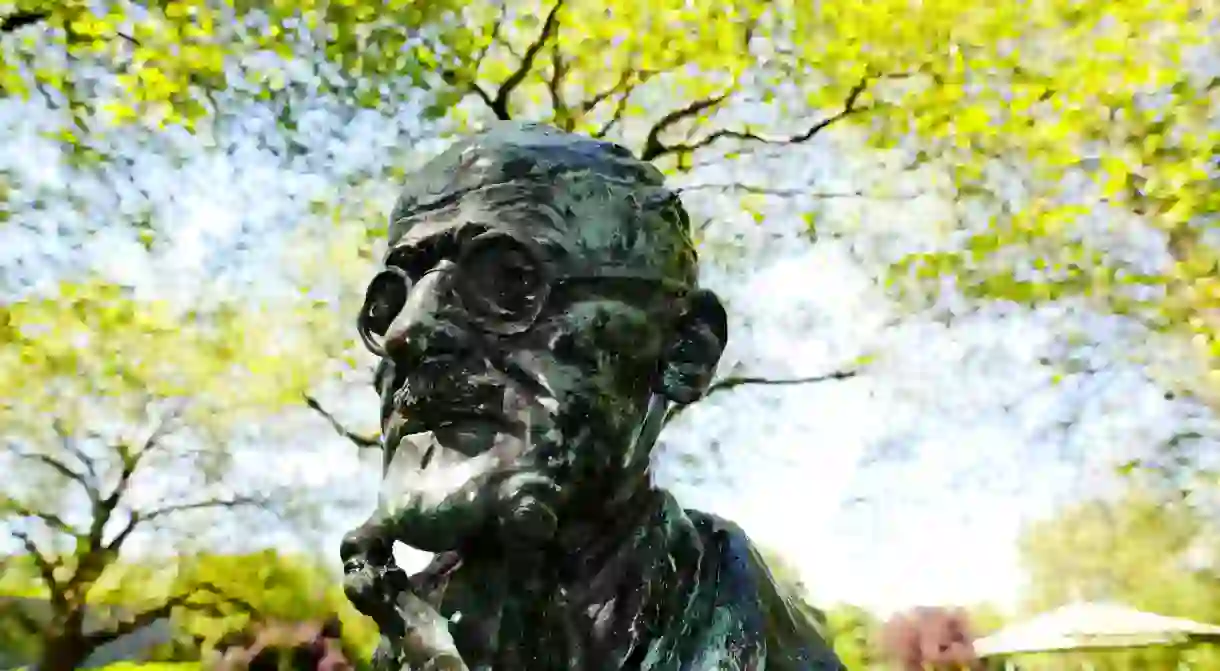A Literary Tour of Dublin: Yeats, Joyce and Swift

Home to some of the most enduring writers in the English language, Dublin retains its prestige as one of the vibrant literary capitals of Europe, and its tradition is proudly maintained by museums, walking-tours, and heritage sites of all kinds. Here are some of the best.
The James Joyce Tower and Museum
Museum

Immortalised as the opening location in ‘Ulysses,’ and a constant magnet for James Joyce biographers, scholars and aficionados, this well-kept Martello was the brief home of the Irish author through the outreach of his friend Oliver Gogarty in the Fall of 1904. The occupied room has been carefully preserved and outfitted to reflect its appearance during the period of his stay, and exhibits a number of Joyce’s personal effects, in addition to curios and ephemera pertinent to his writings. Open seven days a week, The James Joyce Tower, through generous donations and government auspices, boasts free admission, and remains one of the most significant sites of pilgrimage for the Modernist literary enthusiast.
Trinity College
Cathedral, Library, University

The most prestigious and (by some distance) the most ancient college in Dublin, Trinity is the Alma Mater to a literary legacy that includes Jonathan Swift, Edmund Burke, Samuel Beckett, Bram Stoker, and Oscar Wilde. Many of its buildings date from as far back as the 16th century and some, like the Campanile bell tower, make up the city’s most iconic landmarks. The college boasts the largest collection of historic manuscripts and early printed texts in Ireland, and is the repository of over 100,000 new items per annum, with an entire collection of around 5 million books.
Saint Patrick's Cathedral
Cathedral, Library

Founded in 1191, Saint Patrick’s Cathedral is one of the oldest churches in Ireland, and notable as the final resting place of the author and politician Jonathan Swift. It contains an impressive collection of Swift memorabilia including early editions of his printed works, a cast of his skull, his death-mask, and a number of personal effects. His grave and epitaph constitute a substantial tourist attraction to modern devoti. Written in Latin, the epitaph has been popularised by its translation by another giant figure in Irish literature, W.B. Yeats: Swift has sailed into his rest;Savage indignation thereCannot lacerate his breast.Imitate him if you dare,World-besotted traveller; heServed human liberty. Address:St Patrick’s Close, Dublin 8, Ireland
Dublin Literary Pub Crawl
Historical Landmark

Led by founder Colm Quilligan and a troupe of professional actors, the Dublin Literary Pub Crawl takes the traveller through a pub-themed itinerary of Irish literary history, with stops including the Duke Pub (also the point of departure and ticket-booth – frequented by Irish legends Patrick Kavanagh and Brendan Behen), The Bailey (watering-hole of James Joyce), and Davy Byrne’s, the scene of one of Leopold Bloom’s lunches in ‘Ulysses.’ At each stop the actors perform scenes from the plays of Samuel Becket and W. B.Yeats, recite poetry, anecdotes, and scraps of history and legend. Address:9 Duke St, Dublin, IrelandHours: Tickets go on sale at 19:00, the tour begins at 19:30
Dublin Writers Museum
Museum, Building

This gorgeous building is home to an eclectic array of literary memorabilia including letters, first editions, manuscripts, portraits and curios from the most significant historical writers of Dublin, with emphases on Oscar Wilde, William Butler Yeats, James Joyce, Samuel Beckett and George Bernard Shaw. Featuring a wide programme of lectures, public readings, exhibitions and live theatrical performances, the museum is unique among its kind for focusing not just on any single writer, but many at once. Including a café, bookshop, and lecture theatre, The Dublin Writers’ Museum is the first stop for an informative overview of Irish literary history. Address:18 North Parnell Sq, Dublin, Ireland Jackson Barrett













